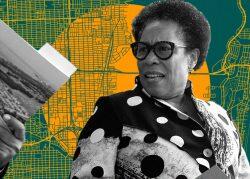By now, it has become clear Miami-Dade County residents have a hard time finding a rental. Amid the population influx, apartment hunters face stiff competition.
Turns out, the county is not just a tough place to find a unit, but the toughest market in the U.S.
A new RentCafe report found Miami-Dade was the “most competitive” apartment market of 2022. An average of 32 renters vied for each available unit, far above the national average of 14 renters competing for an apartment, according to RentCafe, a statistical data and apartment listing provider. In Miami-Dade, vacant units took an average of 25 days to be leased, compared with an average of 32 days nationwide.
To add to that, tenants who already secured an apartment in Miami-Dade chose to stay, with the lease renewal rate hitting 75 percent. Although the county experienced a record 2.8 percent increase in the supply of apartments in the first part of 2022, it still wasn’t enough to meet demand, RentCafe concluded.
The findings are the most recent highlighting Miami-Dade’s multifamily market boom that started in late 2020. Pandemic-led migration and the lack of a state income tax, along with South Florida’s growing base of tech and financial firms have made it a prime choice among millennials and Gen Zers, according to the report.
It’s been good news for apartment developers and investors who seized on the population growth to plan new multifamily projects. But at the same time, skyrocketing rents resulting from high demand have deepened an existing affordability crisis.
This year, developers are on tap to complete more than 22,500 market-rate units across South Florida, which would be a record in annual deliveries for at least the past decade, a Berkadia market outlook report found.
And even more projects are planned. This month, the Pérez family’s Related Group scored a $164 million construction loan for a 44-story, 506-unit apartment tower at 77 Southeast Fifth Street in Brickell. Also in Brickell, Henry Pino’s Alta Development plans a 38-story, 320-unit apartment building at 160 and 180 Southwest Ninth Street.
In March, South Florida led the nation with a 58 percent median rent hike over two years, and Miami was deemed the most rent-burdened city in the U.S.
Yet, since the summer, rate increases have significantly slowed. Realtor.com shows that rents rose 6.3 percent in November, year-over-year, with a median monthly rent of $2,638.
Developers also are targeting renters priced out of market-rate units, with plans for affordable and workforce housing projects. In North Miami, Coral Rock Development Group plans the 10-story Kayla at Library Place on the city-owned site of the Greater North Miami Chamber of Commerce at 13100 West Dixie Highway. Out of 138 total units, 55 will be for households earning 60 percent of the area median income and 83 will be for those earning 100 percent of the AMI. The Department of Housing and Urban Development pegs Miami-Dade County’s AMI at $68,300.
Read more


